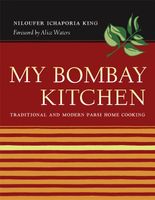Advertisement
Note on Transliteration
Published 2007
There are several systems for the transliteration of Indian languages in current popular use, as opposed to scholarly use, where there’s perhaps more agreement. Since this is a book to cook from (and take to the market), it might be useful to state that the transliteration of recipe titles and plant names in Gujarati here generally follows the contemporary United Nations system without diacritical marks: words such as Parsee, Hindoo, jerdaloo (apricot), jeera (cumin), kheema (ground meat), paneer (soft cheese), kheer (a milky sweet), and oombaryu (a bean dish) are rendered as Parsi, Hindu, jardalu, jira, khima, panir, khir, and umbaryu, and so forth, except when the proper noun or word has migrated over to English. For instance, Punjab is now on the map of India, where it should strictly be Panjab; ghee should be ghi; and vindaloo should be vindalu. It’s an imperfect world, and in the effort to be understood, and for readers to be understood, there’ll be the occasional inconsistency.

